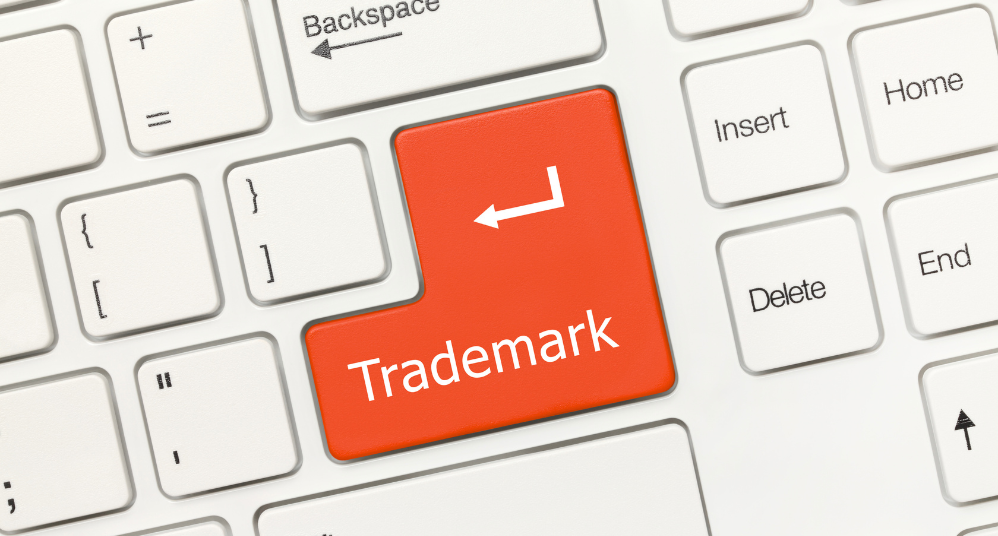You’ve grown weary of attending to your 9‑to‑5 job as you do not foresee any prospects of career progression. You are very keen to go it alone by starting your online venture as you have seen many of your colleagues and friends strike gold by following that route. However, you have absolutely no idea on how to get started.
Since the time Internet emerged, online technology has progressed by leaps and bounds (and still continues to), rendering the process of incorporating a web‑based startup, remarkably easy. Nowadays, corporate organizations, as well as big and small brick‑andmortar businesses, need to have an online presence (read website) in order to be viable and competitive. Regardless of whether you want to turn your online venture into your chief source of livelihood or wish to develop the Online Business business as a secondary source of income, you can achieve success if you follow specific steps.
A typical web‑based online business has some inherent advantages over an offline or physical commercial establishment that makes the former more lucrative than the latter. For instance, your incorporation and overheads costs are lower, you can make do with less staff at least in the initial years, and overseeing the entire setup is more manageable. Abide by the steps outlined below if you are sincere about beginning your online undertaking, increasing its visibility across the web, attracting niche traffic, and raking in the moolah which is what ultimately matters.
1. Company formation and registration with IRS/Canadian Revenue Agency
The entire process of registering and incorporating a new online business has become much easier in the present times. You do not have to fill up endless forms and documents, make endless visits to the respective authorities for submitting the transcripts, pay a small fortune as registration fees, and finally wait for the approval‑these formalities used to be de rigueur in the past. Though you can hire an accountant or solicitor for entrusting them with the formalities of opening an online startup, you can also do the work of the consultant yourself as the rules and regulations are easy to follow.
First of all, you’ll need to decide whether you want to opt for a partnership or sole proprietorship mode or wish to fulfill the obligations of a public or private limited company. Each and every form of business has its own advantages and disadvantages. At the end of the day, it is completely up to you to decide which route you will take depending on your preferences and requirements.
Once you are through with the first step, your next task will be to decide upon a company name. Make sure the name is something that has a good recall value. In other words, it should be one that you or anybody else for that matter can easily remember.
Thereafter, you will have to accumulate all the details required for registration including company name, business address, and nature of the online business, share capital details, shareholder(s) details, and company director details. The next step would be to prepare the Memorandum and Articles of Association (a must if the venture is a public limited or private limited company). Thereafter, you’ll have to register your business with the IRS for which you will have to log in to its official site www.irs.gov.
You will receive an online business registration number for the state you are based in. Once you click on the link for your respective state, you’ll be taken to the portal of the state from the IRS site. You get a registration number for your state and if you want you can also a federal EIN (Employer Identification Number).
In order to obtain both the numbers, just follow the steps listed below:
- Click on your state’s link
- Furnish the relevant information as outlined in the application form for your state
- Thereafter, you will be landing at the IRS’s online application page for EIN registration
- Give additional info (if required) to apply for your EIN number
- Once you receive your EIN, check out of the IRS site
- Key in your EIN number in the application form for your state
In case you are a Canadian citizen (naturalized or residency), you’ll have to register your company with the Canadian Revenue Agency. There are four distinct CRA program accounts and you will have to apply to anyone for registering your startup by fulfilling BRO (online business registration) formalities. Once you are through, you’ll receive a business number which will lend a legal sanction to your venture.
BRO can connect you with the sites of provincial programs for Nova Scotia, Ontario, and British Columbia. Log in at www.canada.ca for taking advantage of the BRO for registering your startup as a:
- Proprietor or owner
- Third party petitioner
- RepID or GroupID representative
- Domestic worker, caregiver or babysitter employer
2. Picking up a domain name and registering it
Once you decide on the commercial segment you wish to enter and are through with the company’s incorporation, your next response would be to register record your online firm’s domain name. Your sites URL (uniform resource locator) is its domain name which is unique as no other site owner can stake claim to the web address once you have registered it. Registering or recording the domain name of your web‑based venture is similar to patenting an offline business‑you become the sole owner of the online platform and enjoy specific intellectual property rights.
You can apply for a domain from any of the several firms dealing with online domain registration. Many of these firms that are termed as domain name registrars run promotional offers from time to time that let you have a domain or several domains free of cost if and when you opt for a web hosting package. It is also recommended that one should avoid purchasing a domain from the hosting provider. It is better to have the hosting and domain account separated. However, always make sure that the domain or web address is registered under your name and not in the name of the registering company.
If the domain is not registered under your name, you may not be able to lay claim to it in case you shift to another hosting firm in future. Alternatively, if you are entrusting the creation of your site to a professional web designer and developer, ensure that you buy out the sites domain and the hosting account. Much before you register the domain, you’ll need to select a title or name for the same.
See to it that the domain name you eventually choose is unique and distinctive or in other words, no other site should have the same name. You can opt for your name if you wish to lend a personal touch to the product or service you would be promoting. However, if you find that somebody else already owns a domain by that name, you can tweak the name a bit by prefixing or suffixing another word, for instance, simongarfunkeltrainer.com in place of simongarfunkel.com
Your other option, when it comes to choosing an exclusive domain name, is to base it on the purpose that the product or service is going to serve. A domain name that mirrors your online business niche will go a long way in attracting the customer segment you are targeting.
3. Website hosting
Once your web‑based startups’ domain name has been registered, you will have to book space on the servers of the hosting firm in order to host your e‑commerce site. Though many individuals register the domain with one firm and books server space with another, you are better off entrusting the tasks to one company. That way, you’ll be able to keep a leash on your overall costs as many firms offer free domain names when you subscribe to their web hosting packages.
Before you select a hosting firm, check out the background of at least 4‑5 such companies. Also, compare and contrast the different hosting features they are offering like uptime scalability percentage, disk storage capacity, drag and drop site builder, subscription periods, optimization for email, and so on. Alternatively, find out if the firms are providing SSL security, e‑commerce and online marketing tools, feedback forms, and most importantly, round‑the‑clock customer support.
There are many well‑established companies that provide a high quality of service with respect to website hosting like GoDaddy.com, Bluehost.com, JustHost.com, iPage.com, and WebHostingHub.com. Cloud servers or hosting has recently been popular for their security and ease of use. So exploring the hosting services provided by Linode or Cloudflare can be one of those options. Cloudflare also offers a free SSL certificate with each hosting account.
4. Filing Your Trademark
Applying for a trademark should be your next step. Registering the brand’s trademark is essential not only because you invested so much time, effort, and resources to conceive a distinctive name, logo, and slogans but also to protect it from infringement by competitors.
If most of your business is done in the US, then protect your brand name in the US by registering your trademark with the US Patent and Trademark Office (PTO).
If most of your customers are in Canada, start with registering your trademark in Canada.
You can file your trademark yourself or ask for help. Hiring a trademark professional will help you to increase the chances of successfully registering your trademark while minimizing the stress.
Remember: trademark registration is the cheapest form of protection you can get for your brand.
5. Check to make sure you are not infringing on anyone’s intellectual property rights
If you are about to sell products, make sure that you are not infringing on anyone’s patent rights. Likewise, for literary, musical and artistic works, it’s useful to make sure that there is no copyright infringement. If you are the creator, then you will own copyright, however, if not, make sure you have rights to sell these products. With a name you give to your products, check to make sure you are not infringing on anyone’s trademark.
Very often people overlook intellectual property aspect of opening a business, which can cost them dearly.
6. Website design and development
After your website has been hosted, your next response would be to design and develop the online business website that will be the firm’s online face. You can either build the portal yourself or outsource the project to a webmaster. In case you take the DIY route, you can take advantage of the multiple design and development tools (that are provided by numerous hosting companies free of cost) for creating your portal.
There are many open‑sourced website building and blogging CMS platforms including but not limited to WordPress, Joomla, Drupal, and Magento that you can employ as well. WordPress is by far, the most popular CMS platform as it is not only remarkably easy to set up but also offers near unlimited templates that are compatible with customization as per your preference. You can also employ Adobes Dreamweaver for website creation but then you will have to be mentally prepared to devote the time necessary for mastering this tool which might take months.
However, outsourcing the website design and development project to a professional design company or webmaster will ensure that you have an advanced as well as the user‑friendly portal. With so many design companies competing with each other for clients, you can get the job done without having to spend a ton. And if you can get your site designed and developed by a learner, a college student, for instance, you may have to pay even less.
While you get your site developed, bear in mind that both the visual and textual content of the portal equally matter. Also take note that if you entrust the project to a designer, you automatically own the sites hosting account as well as its domain name. Also before launching a website, it is a good idea to know where exactly its files are located. For easier management and understanding, WordPress is the best platform to build your site on. It is pretty easy to manage and make changes. Hence, it will be a lot easier for you to make new blog posts, change prices, add photos or changing sections without even asking a developer to take care of those.
7. Promoting your site via online advertising and by hiring freelancer
Following the hosting of your online business website on the net, your main thrust obviously will be to amplify its visibility across all online platforms, including the automated social networking sites. Formulating an SEO strategy would be indispensable if you want to divert a high volume of traffic to your site. Search engine optimization would imply creating original textual content that elucidates the nature of your business and should be punctuated with relevant keywords that will be preferred by search engines crawler bots.
SEO would also require you to take care of lots of other aspects including but not limited to uploading fresh blogs, PRs, guest blogs, creating profiles on Facebook, Twitter, Instagram, and LinkedIn, podcasting, advertising on Google, Bing, and Yahoo. A robust SEO plan will be instrumental in popularizing your site in a short period of time since it will be wishful thinking to expect users to log in to your site within a few days of its hosting.
The focus should be on content marketing with the ultimate objective of publicizing the portal on social media. As you may not be in a position to invest in Google PPC of Facebook advertisements initially, you can hire freelance content writers. Another good strategy is to get popular bloggers write positive reviews in exchange for a free product or tickets to a movie. There are lots of online platforms where you can hire great freelancers at a fraction of the cost.
Online Business Conclusion:
Once your Online Business business portal is up and running i.e. it has been hosted, there are several steps you can take to amply its footprints in the online realm. For instance, you can titillate users with a white paper imprinted with rebate coupon codes, freebies on purchasing a specific value of products, and so on. You can keep track of your site’s performance and growth by using analyzing tools like Google Analytics which is available for free.
To say the last but not the least, you’ll have to give due consideration to aspects of taxation, accounting, legal matters, and banking.







